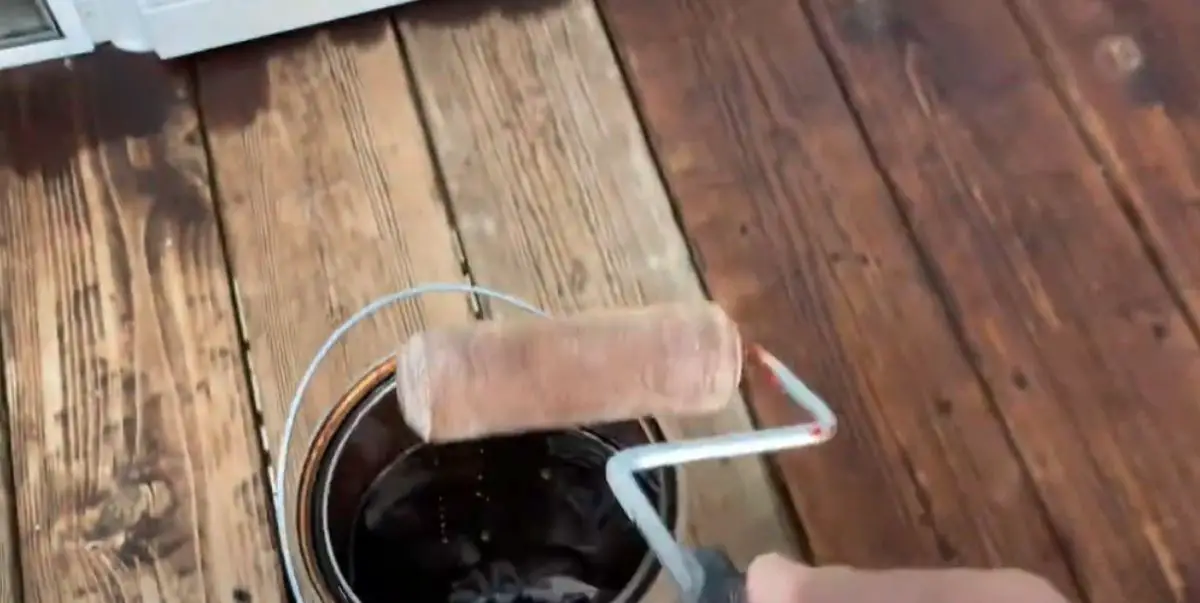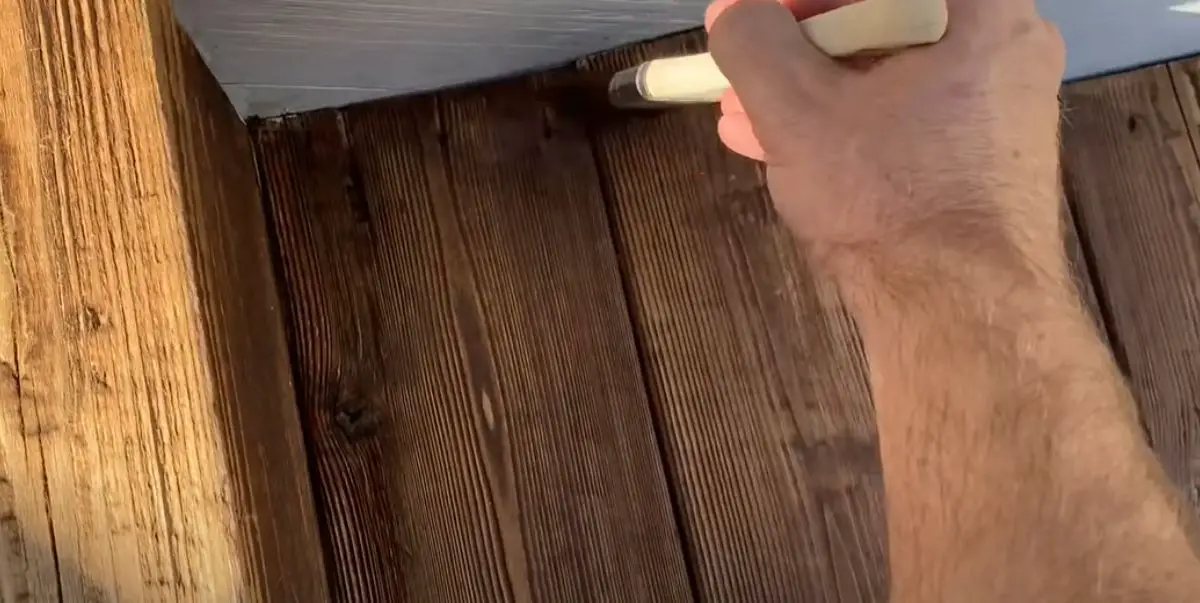Wait at least 24 hours between coats of stain for optimal results. To ensure proper drying and absorption, allowing adequate time between coats is crucial.
Proper timing will allow each coat to fully penetrate and adhere to the surface, resulting in a more even and professional finish. By following this timeline, you can achieve a satisfying outcome for your staining project.
Factors To Consider Before Applying Stain
When it comes to applying stain to wood, there are several important factors to consider before diving in. One of the key questions is how long to wait between coats of stain, as proper timing can greatly affect the final result. To ensure optimal staining success, it’s important to take into account two main factors: climate and temperature, as well as wood condition and type. Let’s take a closer look at each of these considerations.
Climate And Temperature
Climate and temperature play a crucial role in the staining process. It’s important to choose the right time to stain your wood based on the climate conditions in your area. Staining should ideally be done when the temperature is between 60°F and 80°F, and when the humidity level is low (between 40% and 70%). This allows the stain to dry properly and evenly, preventing issues such as blushing or bubbling.
In colder climates, it’s essential to avoid staining when temperatures are below 50°F as this can impede proper drying. On the other hand, extremely hot weather (> 90°F) can cause the stain to dry too quickly, potentially resulting in uneven coloring.
Wood Condition And Type
Before applying stain, you need to assess the condition and type of wood you’re working with. The condition of the wood can impact the absorption rate and the number of coats needed. If the wood is in good condition, it will usually require fewer coats of stain compared to damaged or weathered wood.
Additionally, the type of wood affects the staining process. Hardwoods, such as oak or walnut, tend to absorb stain differently than softwoods like pine or cedar. Understanding these differences can help you determine the number of coats needed and the overall appearance of your stained wood.
To achieve the best results, it’s recommended to test the stain on a small inconspicuous area before applying it to the entire surface. This allows you to assess the color and adherence of the stain to the wood, ensuring you achieve your desired outcome.

Determining The Ideal Wait Time
When it comes to staining wood surfaces, achieving the perfect finish requires patience and attention to detail. One key aspect to consider is the wait time between coats of stain. Determining the ideal wait time can have a significant impact on the final outcome of your project. In this blog post, we will explore how to determine the appropriate waiting period to ensure the best results.
Understanding Absorption Rate
Before we dive into the wait time between coats of stain, it’s important to have a good understanding of the absorption rate of the wood you’re working with. Different types of wood have varying levels of porosity, which means they absorb stain at different rates. Softwoods like pine tend to absorb stain faster, while hardwoods like oak may require more time for the stain to penetrate.
It’s crucial to take into account the absorption rate of the wood because the waiting period between coats depends on how well the wood has absorbed the stain. If you apply a second coat too soon, it may not adhere properly or result in an uneven finish. On the other hand, waiting too long could lead to the stain drying and no longer being receptive to additional coats.
Test Areas For Optimal Results
To determine the ideal wait time between coats of stain, it’s recommended to perform test areas on the wood surface. Choose inconspicuous spots or scrap pieces to apply the stain and observe its drying time. By doing this, you’ll be able to see how long it takes for the wood to absorb the stain effectively and reach the desired color.
After applying the first coat of stain, allow it to dry completely. Start by testing a second coat at different intervals, such as waiting 30 minutes, one hour, or even overnight. By examining the test areas, you can determine the waiting period that produces the desired depth and consistency of color. It’s crucial to take note of the characteristics of each test area, such as the richness of color and the overall appearance, to guide you in deciding the optimal wait time.
While testing, it’s also essential to consider the environmental conditions. Factors such as temperature and humidity can influence the drying time of the stain. For instance, warmer temperatures and lower humidity levels can accelerate drying, while cold temperatures or high humidity may prolong the waiting period between coats.
In conclusion, determining the ideal wait time between coats of stain is crucial for achieving a flawless and uniform finish. Understanding the absorption rate of the wood and conducting test areas can help you find the optimal waiting period for your specific project. Taking the time to find the perfect balance will ensure that your stained wood exhibits a beautiful, professional-looking result.
Best Practices For Applying Multiple Coats
When it comes to applying multiple coats of stain, it’s important to follow best practices in order to achieve a professional and uniform finish. This includes factors such as allowing the proper drying time between coats, lightly sanding between applications, and ensuring consistency in the application process. By following these guidelines, you can enhance the appearance and durability of your stained surfaces.
Light Sanding Between Coats
Sanding between coats of stain is crucial to achieve a smooth and even finish. After allowing the stain to dry for the recommended time, lightly sand the surface with fine-grit sandpaper. This helps to remove any imperfections, rough spots, or raised wood fibers caused by the first coat of stain. After sanding, it’s essential to remove all dust before applying the next coat.
Consistency In Application
Consistency in how you apply each coat of stain is key to achieving the desired results. Ensure that each coat is applied using the same technique, whether it’s brushing, wiping, or spraying the stain. This consistent application helps to avoid variations in color and sheen between coats, resulting in a more uniform and professional appearance.
Troubleshooting Common Issues
When it comes to staining wood, achieving a smooth and even finish is the goal. However, there are a few common issues that can arise during the staining process. Understanding these issues and how to troubleshoot them can help you avoid frustration and achieve the desired results. In this section, we’ll discuss two common problems that may occur when applying stain: uneven stain absorption and excessive wait time.
Uneven Stain Absorption
If you notice that the stain is not absorbing evenly into the wood surface, there could be a few reasons for this problem. One likely cause is that the wood is not properly prepared before applying the stain. It’s essential to ensure that the wood is clean and free from any dirt, dust, or previous finishes. Sanding the wood to remove any existing coatings and smooth out imperfections can also help the stain penetrate more evenly.
Another possible reason for uneven absorption is the type of wood you are working with. Different woods have varying levels of porosity, which can affect how they absorb stain. Woods like pine or maple tend to have a more even absorption, while dense woods like oak or cherry may require additional steps to achieve an even finish.
Furthermore, applying the stain too quickly or not allowing enough time for the stain to dry properly between coats can also lead to uneven absorption. It’s important to follow the manufacturer’s instructions regarding the recommended drying time between coats, as this allows the stain to fully penetrate and develop a consistent color.
Excessive Wait Time
On the other hand, waiting too long between coats of stain can lead to issues as well. If you allow the stain to dry completely before applying another coat, it may be challenging for the subsequent layers to adhere properly. This can result in a patchy and blotchy appearance. To avoid this problem, it’s best to follow the recommended wait time provided by the manufacturer.
However, in some cases, the recommended wait time may not be long enough, especially if the weather conditions are humid or cold. In such situations, it’s important to consider the drying time required by the specific stain product, as well as the environmental factors. If you live in a humid or cold climate, you may need to extend the wait time between coats to ensure that each layer properly dries and adheres to the wood.
In conclusion, troubleshooting common issues that arise during the staining process can help you achieve a smooth and even finish. By addressing problems such as uneven stain absorption and excessive wait time, you can enhance the overall appearance of your stained wood. Remember to properly prepare the wood surface, follow the recommended drying time, and consider the specific characteristics of the wood and environment you’re working in.
Conclusion And Final Considerations
To achieve the best results when staining wood, it’s crucial to allow ample drying time between coats. Typically, waiting 24 hours before applying the next coat is recommended, but it may vary depending on the type and brand of stain you’re using.
Testing the dryness of the previous coat before reapplying can ensure a smoother finish.
Factors Impacting Wait Time
Several factors influence the wait time between coats of stain. By understanding these factors, you can make more informed decisions and achieve optimal results for your staining project.
First and foremost, the type of stain you are using plays a significant role in determining the wait time. Different stain formulations require different drying times, so it is essential to consult the manufacturer’s instructions for the specific stain you are using. These guidelines will provide you with the most accurate information for your project.
The temperature and humidity levels in your environment are also critical factors to consider. In general, higher temperatures and lower humidity levels will expedite the drying process, resulting in shorter wait times between coats. Conversely, cooler temperatures and higher humidity levels can prolong the drying time, requiring a longer wait between coats.
The type of wood you are staining can impact the drying time as well. Some woods, such as softwoods, absorb stains more quickly, while hardwoods may require additional time for the stain to penetrate and dry. Keep in mind that each type of wood has its unique characteristics, so it is essential to take this into account when determining your wait time.
Another crucial factor is the thickness of each coat of stain you are applying. Applying a thick layer of stain will take longer to dry compared to a thin, even coat. Consider using multiple thin coats instead of one thick coat, as this can allow for quicker drying times and a more even finish.
Importance Of Patience
When it comes to staining, patience is truly a virtue. Rushing the process and not allowing adequate drying time between coats can lead to a variety of issues that can compromise the final result. Here’s why patience is of utmost importance:
- Avoid Smudging or Smearing: Allowing each coat of stain to dry completely before applying the next ensures that you won’t accidentally smudge or smear the previous coat.
- Enhance Adhesion: Proper drying time allows the stain to adhere properly to the wood surface, resulting in a more durable and long-lasting finish.
- Prevent Uneven Color: If you rush the process, the stain may not have ample time to penetrate the wood evenly, leading to blotchy or uneven coloration.
- Minimize Gumminess: Giving each coat of stain sufficient time to dry prevents the surface from becoming sticky or gummy, which can attract dust and other particles, resulting in a less smooth and professional-looking finish.
By exercising patience and allowing each coat of stain to dry completely before proceeding, you can ensure a beautiful and flawless finish that will enhance the natural beauty of your woodwork.

Frequently Asked Questions For How Long Should I Wait Between Coats Of Stain
When Can I Apply A Second Coat Of Stain?
Apply a second coat of stain after the first coat has completely dried, which typically takes around 24 hours. Ensure the surface is clean, smooth, and free of any imperfections before applying the second coat for optimal results.
What Happens If You Apply Second Coat Of Stain Too Soon?
Applying a second coat of stain too soon can result in a blotchy or uneven finish. It’s important to wait for the first coat to fully dry, usually around 24 hours, before applying the second coat. This allows the stain to penetrate and adhere properly for a smooth, uniform appearance.
Will 2 Coats Of Stain Make It Darker?
Yes, applying two coats of stain will make the surface darker. This allows for deeper color saturation.
How Soon Can You Reapply Stain?
You can reapply stain as soon as the previous coat has dried completely. This usually takes about 24 to 48 hours, but it can vary depending on factors like temperature and humidity. Make sure to follow the instructions provided by the stain manufacturer for the best results.
Conclusion
The ideal waiting time between coats of stain is typically 2-4 hours. However, it ultimately depends on factors such as humidity and temperature. By allowing proper drying time, you can achieve a flawless finish on your wood surfaces. Remember to follow the stain manufacturer’s recommendations for best results.


